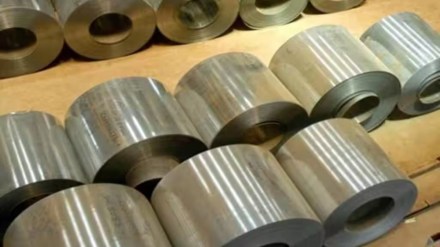Indian primary aluminium manufacturers are expected to post operating margin growth of over 25 per cent on-year this fiscal owing to continued healthy demand, better realisations and a likely reduction in the cost of production driven by cheaper energy and alumina, stated a report by CRISIL. This is against approximately 20 per cent growth in fiscal 2024.
The industry, it added, is capital-intensive, requires upfront capital expenditure (capex) and is marked by volatile operating profitability. Therefore, an increase in operating profit will reduce reliance on debt to fund ongoing capex (mainly for increasing capacity and the share of value-added products and for operational linkages) and will support credit metrics.
CRISIL Ratings studied three domestic primary aluminium producers which accounts for ~90 per cent of the 4.1 million tonne (MT) domestic capacity, to draw these conclusions.
During the last fiscal, the improvement in operating margin was driven by a decline of more than 30 per cent in power cost as domestic coal and energy prices stabilised after a meteoric rise in fiscal 2023 due to geopolitical uncertainty. This offset a moderation of more than 10 per cent in aluminium prices, even as demand remained robust.
This fiscal, CRISIL said, operating margin will improve on strong demand – both domestic and exports – besides an expected improvement in realisations and a likely reduction in production cost.
“Domestic demand, which accounts for almost half of the domestic primary aluminium sales volume, rose approximately 10 per cent in the past two fiscals and is likely to rise 7-9 per cent this fiscal. This will be driven by increasing adoption of the metal in the automotive segment along with healthy growth in the power and construction segments. Export demand is also likely to remain buoyant this fiscal as there are signs of recovery in the US and Europe. Added to this, increasing demand in China from the automotive and energy transition segments will push demand higher in calendar year 2024, after a lull in the past two years,” said Ankit Hakhu, Director, CRISIL Ratings.
Further, CRISIL expects average aluminium LME prices to inch up to $2,300-2,500 per tonne this year from last year’s average of $2,200, supported by better demand, lower metal inventory and potentially tighter global supply dynamics as China continues to cap annual aluminium production.
“We also expect overall cost of production to decline a further 5-10 per cent this fiscal, driven by lower spends on imported alumina (one of the key raw materials, accounting for approx 30 per cent of overall cost) and power and fuel (30-35 per cent of overall cost). Players are enhancing upstream alumina refinery capacity, which should reduce dependence on imports. Materialisation of low-cost coal linkage, along with operationalisation of some of the captive coal mines, should reduce coal costs and thus power and fuel expenses this fiscal. Overall, we expect average operating margin to increase to more than $750 per tonne this fiscal from around $600 last fiscal, taking operating profit to above Rs 20,000-22,000crore,” said Ankush Tyagi, Associate Director, CRISIL Ratings.
The increased Ebitda will aid prudent funding of Rs 15,000 crore aluminium capex in fiscal 2025 for completion of ongoing smelter capacity expansion by around 10 per cent and improving forward and backward integration to sustain global cost competitiveness. This, in turn, will keep debt in check this fiscal, thereby improving debt metrics and supporting credit profiles, the report stated.
Any sharp correction in global aluminium prices, weaker-than-expected global and domestic demand and significant increase in input costs will remain the key monitorable.
